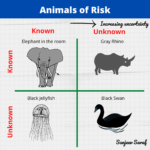The major cause of natural gas pipeline rupture is not corrosion or material defect but external damage.
External damage is the damage to pipeline during digging, pilling, ground work, etc. by heavy equipment such as anchor, bulldozer, excavator, or plough. Moreover typically the external damage is from third party construction activities and not the pipeline owner-operator.
Based on the European Gas Pipeline Failure Data, you should expect one external damage every 2800 miles of pipeline annually.
External damage to smaller pipes is more frequent than larger diameter pipelines. The two major factor affecting external damage are pipeline wall thickness and depth of cover.
Pipeline Wall Thickness
Based on the European Gas Pipeline Failure Data, no external damage was observed on pipelines with a wall thickness of more than 15-mm.
Depth of Cover
As the depth of cover increases, external damage from third party to the pipeline reduces.
This begs the obvious question, if construction activities are the largest contributors of pipeline rupture, why is it difficult to prevent pipeline ruptures from third party damage?






One Response
to prevent third party damage pipeline companies usually install warning boards,on which details about pipeline and contact no.pipeline central control written normally.Now my query is if computational pipeline leak software becomes unresponsive for a while during leak any where along pipeline. Then person who is not familiar about pipeline system, How he will inform pipeline company about LOCATION of leak. He might not able to give chainage detail of pipeline which is required to close remote operated valve to isolate that section.My query in summary is that pipeline should be well known about all village names pipeline maps so that with only knowing village name(incident site) he ascertain chainage in turn ROV to isolate valve. Any experienced may please share experience in this situation like this(Situation is SCADA is unresponsive at that time,chainage(kms distance) is not known by incident reporter,he knows only knows village name)